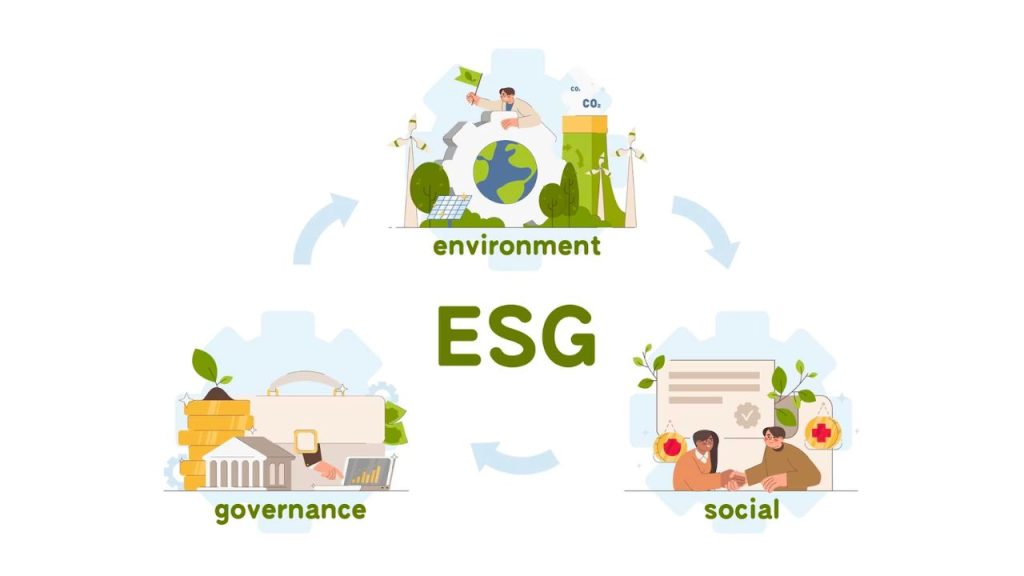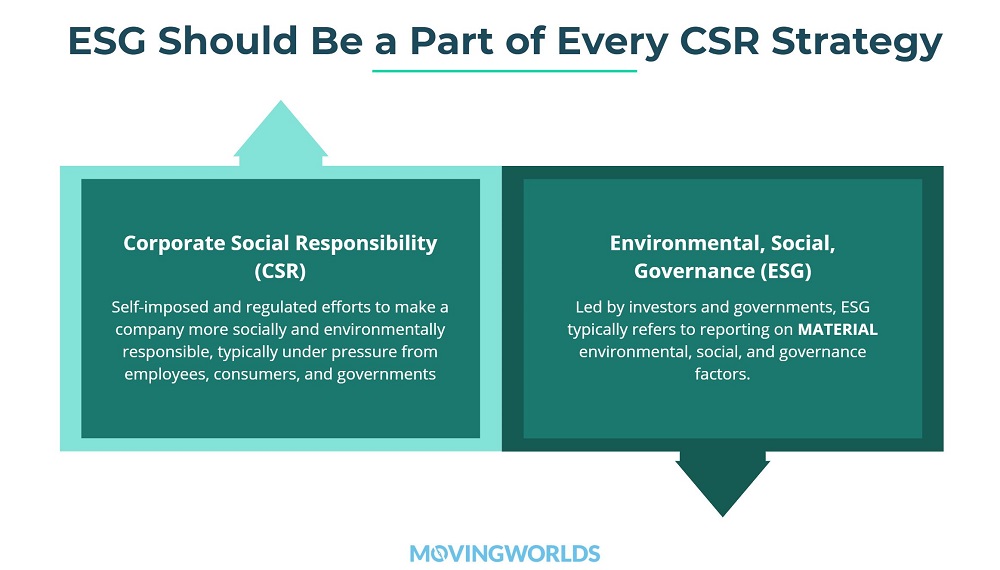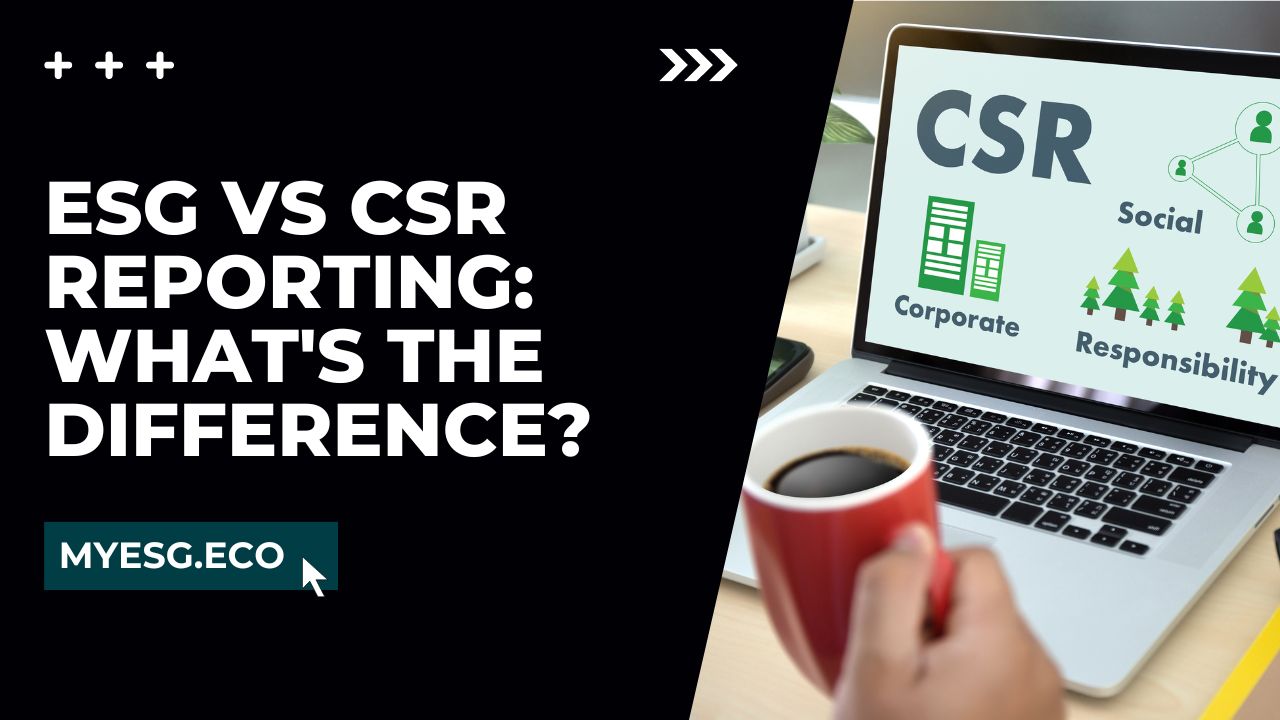As companies strive for greater sustainability, reporting on Environmental, Social and Governance (ESG) and Corporate Social Responsibility (CSR) has become a key part of the conversation.
By understanding the difference between ESG and CSR reporting, businesses can make more informed decisions about how to measure and improve their sustainability efforts.
In this article, we’ll explore ESG vs CSR reporting and discuss what makes them distinct.
Table of Contents
ESG vs CSR: What Do They Mean?
ESG

Environmental, Social, and Governance (ESG) is a set of criteria used by stakeholders, particularly investors, to evaluate a company’s impact on society.
The evaluation is based on the company’s performance in environmental, social, and governance areas, and the results are reflected in the company’s ESG rating.
Many investors use ESG ratings in addition to traditional financial metrics when making investment decisions. Companies often create annual impact reports to showcase their ESG ratings and help stakeholders understand their impact on society.
CSR

Corporate Social Responsibility (CSR) refers to a company’s self-defined values, policies, and practices that address social, economic, and environmental issues. It is driven by the company’s internal culture and policies, and there is no external regulation or mandates.
The goal is to create a culture of social responsibility where decisions regarding volunteering, community investment, and giving programs are guided by these values.
ESG vs CSR: How Do They Work Together?
CSR and ESG are often related, with CSR making up the “S” (social) aspect of ESG. ESG evaluates a company’s impact on society, including initiatives such as diversity, equity, inclusion, donations, volunteering, and grantmaking.
These initiatives are similar to what is included in a company’s CSR strategy, which is defined internally. When creating an ESG report for external stakeholders, a company will include its CSR efforts alongside its environmental and governance efforts.

While CSR is typically evaluated qualitatively, ESG criteria are usually quantified. This can cause tension, as there is no universally agreed-upon method for quantifying the impact of social initiatives.
For example, a company’s volunteer program to feed hungry children may be difficult to measure accurately.
However, there is a growing movement to better define and measure social outcomes, so the “S” in ESG receives the same focus as the “E” and “G” If companies better define their CSR efforts and how they measure their impact, they will be better prepared to provide data on their social outcomes.
A survey from 2021 found that 51% of investors find “social” the most challenging aspect to analyze and incorporate into investment strategies.
ESG vs CSR: History
The concept of CSR has its roots in the philanthropic actions of early 20th-century industrialists, such as Andrew Carnegie and John D. Rockefeller. In 1953, Howard Bowen published the book “Social Responsibilities of the Businessman,” which defined the principles of CSR and advocated for corporate ethics and social responsibility.
The development of CSR principles continued throughout the late 20th century and into the present day.
The roots of ESG can be traced back to the anti-apartheid movement, which called for a ban on new Investment in South Africa. This was one of the first instances where a social issue became a concern for shareholders.
ESG gained prominence in 2006 when the United Nations launched the Principles for Responsible Investment, which was supported by 63 investment companies that agreed to incorporate ESG criteria into their financial evaluations.
Nowadays, major institutional investors expect companies to commit to and report on ESG metrics. Rating agencies such as S&P collect and index ESG performance scores to provide insights.
There is a growing focus on the “S” in ESG, as reflected in the 100 Best Corporate Citizens ranking, which recognizes ESG transparency and performance among the largest 1,000 U.S. public companies.
The most significant portion of the ranking, accounting for 45% of the overall weight, measures a company’s social impact.
ESG vs CSR for Social Impact Professionals
Adopting CSR and ESG practices can bring many benefits to a company, including increased employee morale and productivity, consumer loyalty, and a competitive edge.
In today’s business world, consumers, particularly younger generations, are becoming more aware of a brand’s impact on society and are more likely to support companies that align with their values and concerns, such as climate change and social inclusivity.
However, there are concerns that the ESG movement may be losing its connection to social impact, with some companies only focusing on reporting ESG metrics but not driving internal transformation that results in real environmental and social value for society.
This is known as “ESG washing.”
For a company to achieve its ESG goals and attract the right type of investors and employees, CSR principles must be a fundamental part of its culture, ethos, strategy, and operations.
As a social impact professional with a foot in both the philanthropic and corporate worlds, understanding the relationship between CSR and ESG can help you bridge the gap and drive positive change.
While ESG may receive more attention in the media, it is important to remember that CSR is the foundation that drives sustainable change for a company’s employees, investors, and society.
Having a technology partner that can support your CSR strategy can be crucial in building a sustainable future.
Advantages of ESG Reporting
Disadvantages of ESG
Advantages of CSR
Disdvantages of CSR
ESG vs CSR: Conclusion
Environmental, Social, and Governance (ESG) and Corporate Social Responsibility (CSR) are two related concepts in the business and finance world that focus on a company’s impact on society and the environment.
ESG evaluates a company’s sustainability and ethical performance in terms of its environmental impact, treatment of stakeholders, and governance structure. On the other hand, CSR encompasses a company’s voluntary efforts to take accountability for its impact on society and the environment.
Both ESG and CSR can bring benefits to companies and society, such as improved reputation, increased employee satisfaction, better relationships with stakeholders, and financial benefits.
However, implementing and maintaining ESG and CSR initiatives can also be expensive and challenging, and there may be conflicting priorities between these initiatives and a company’s financial goals.
References:
- 5 ESG benefits for businesses. https://www.techtarget.com/whatis/feature/5-ESG-benefits-for-businesses
- Applying enterprise risk management to environmental, social and …. https://www.moore.org/article-detail?newsUrlName=applying-enterprise-risk-management-to-environmental-social-and-governance-related-risks
- ESG rule: A reason for concern | Opinion | bdtonline.com. https://www.bdtonline.com/opinion/esg-rule-a-reason-for-concern/article_710e90b2-a265-11ed-a70c-e30e1a473d30.html
- ESG investing: everything you need to know about it | Sleek. https://sleek.com/au/resources/esg-investing/
- Problems with ESG: holding companies accountable and faulty assessment …. https://www.coolset.com/academy/problems-with-esg-holding-companies-accountable-and-faulty-assessment-systems
- Business for Social Responsibility (BSR): https://www.bsr.org/
- The Sustainability Consortium: https://www.sustainabilityconsortium.org/

